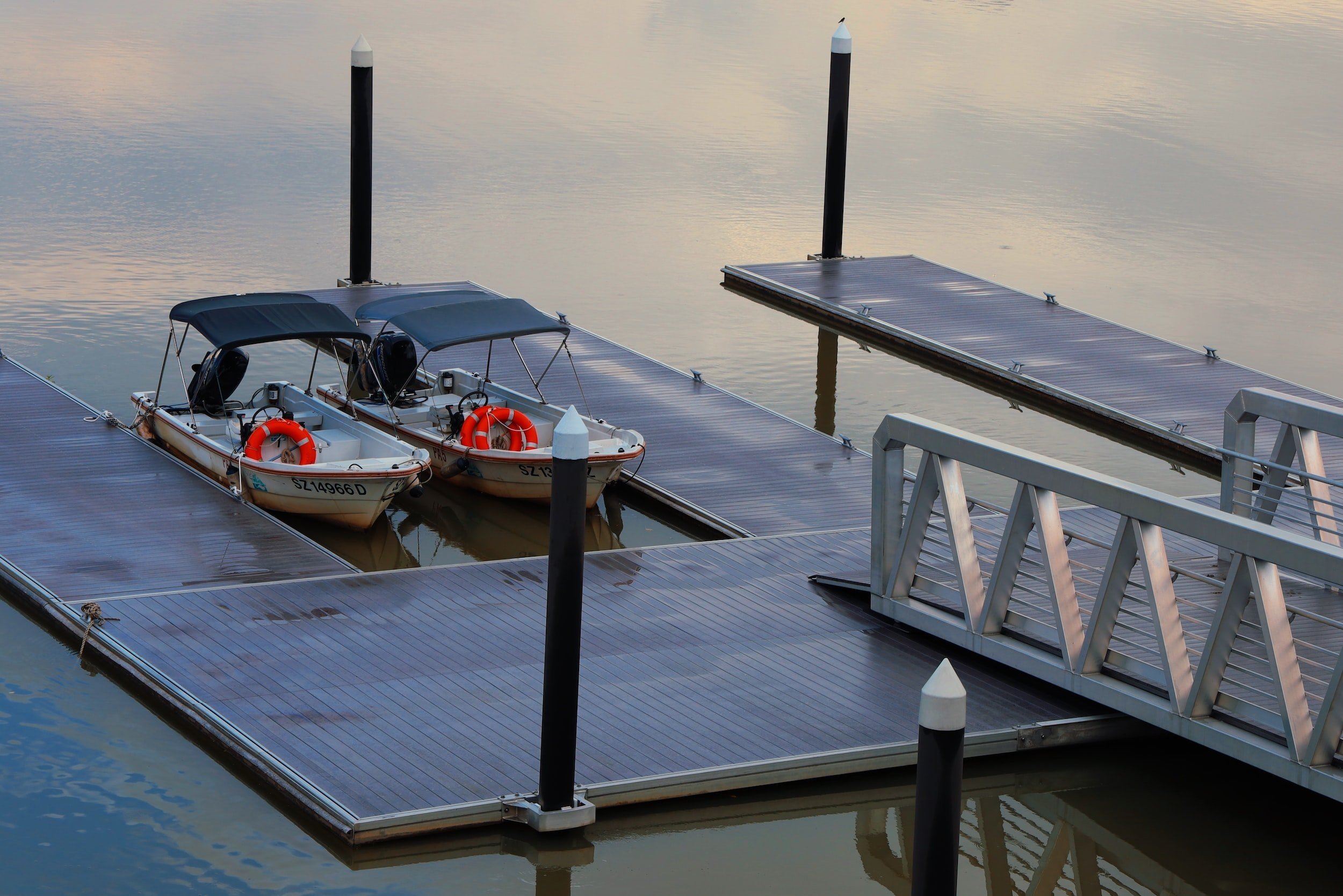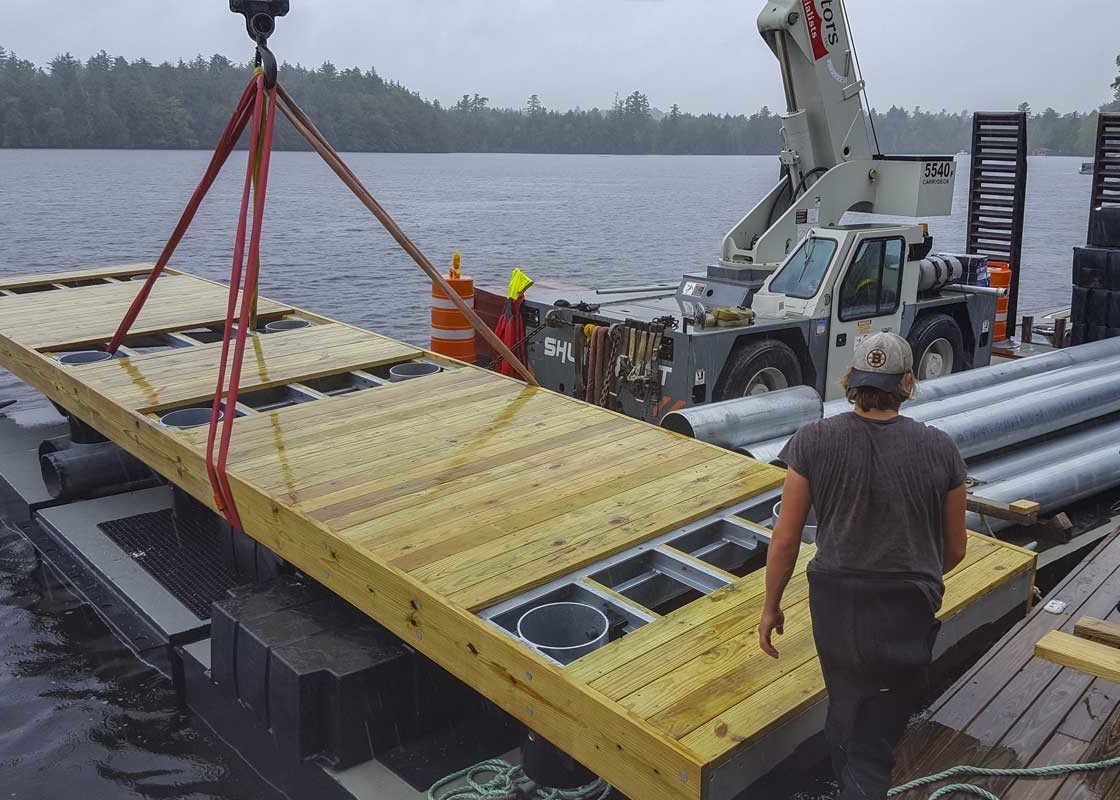Why Regular Maintenance Can Reduce Future Dock Repairs
Why Regular Maintenance Can Reduce Future Dock Repairs
Blog Article
How to Address Common Dock Repair Service Issues for Safe Water Activities

Identifying Common Dock Issues
Determining usual dock issues is important for preserving the performance and safety of your waterfront residential or commercial property. Regular assessments can help uncover problems before they end up being serious, making sure both the longevity of the dock and the security of those that utilize it. One prevalent concern is rusty or loosened fasteners. Over time, screws, bolts, and various other fasteners can come to be loose as a result of constant exposure to water and climate components, resulting in structural instability.
An additional common issue is the deterioration of flotation protection tools. These devices are necessary for maintaining the dock buoyant, and any damage or leaks can cause the dock to checklist or sink. Routinely looking for leakages or waterlogged floats can preempt much more substantial problems.
Furthermore, algae and barnacle buildup on the dock's surface can produce hazardous and slippery conditions. This biofouling not only poses a danger to customers however can also increase the wear and tear of the dock products.
Finally, evaluating for signs of corrosion on metal elements is crucial. Corrosion can compromise the stability of the dock's framework, making it unsafe. By consistently identifying these common dock concerns, you can ensure that your dock remains useful and secure for many years to find.
Fixing Rotting Timber
When resolving the concern of decaying wood on your dock, it is vital to act swiftly to avoid more degeneration. Begin by completely inspecting the entire structure to recognize all affected locations. Utilize a screwdriver to probe the wood; if it sinks in conveniently, the timber is most likely decomposed and requires prompt focus.
Be certain to cut back to healthy, solid wood, ensuring you remove all compromised product. After removal, deal with the remaining wood with a wood chemical to prevent future rot.
Following, replace the removed sections with marine-grade lumber or pressure-treated wood, which are extra resistant to water damages. Secure the new items with stainless-steel or galvanized bolts to avoid corrosion. Additionally, applying a water resistant sealant to the brand-new wood can give an additional layer of protection.
Safeguarding Loose Boards
How do you ensure your dock stays risk-free and functional for all its users? One vital element is safeguarding loosened boards, which can or else present substantial risks. Loose boards not only boost the danger of tripping however can additionally compromise the architectural honesty of the entire dock.

For reinstallation, make use of stainless or galvanized steel screws, as these materials provide exceptional resistance to deterioration in aquatic atmospheres. Make sure the screws are long sufficient to penetrate deep into the underlying assistance framework, yet not so long that they protrude with the dock's surface area. Pre-drilling pilot holes can aid avoid the timber from splitting.
Lastly, maintain a regular assessment schedule to identify and address any type of brand-new problems quickly. By securing loosened boards successfully, you add to the total safety and longevity of useful source your dock, making it a trusted platform for water tasks.
Maintaining Unsteady Pilings
Guaranteeing the security of unsteady pilings is vital to preserving a secure and practical dock. Unsteady pilings can endanger the whole structure, positioning substantial threats to customers and potentially causing expensive fixings. The very first step in maintaining these necessary parts is a thorough evaluation. Check out the pilings for indicators of rot, damages, or changing. Use a degree to inspect for vertical alignment and ensure they are driven deep enough right into the substrate to offer ample assistance.
If the pilings are discovered to be unpredictable, one efficient technique for support is the use of additional supporting. Cross-bracing with treated lumber or galvanized metal can significantly enhance security. Anchor the dental braces firmly to both the pilings and the dock structure to disperse tons uniformly.

Regular upkeep and periodic reassessment of the pilings' stability are important to making certain long-lasting dock safety and capability.
Changing Rusty Hardware
Resolving unsteady pilings is just one facet of preserving a dock's integrity; another vital problem is changing rustic equipment. Gradually, direct exposure to wetness and salt can bring about the oxidation and corrosion of screws, screws, and brackets, endangering the whole structure's security. Regular evaluation for rust is vital, especially after extreme climate or seasonal modifications.
When corroded equipment is determined, prompt Source action is needed. Begin by picking marine-grade stainless-steel or galvanized hardware, both developed to stand up to the rough aquatic environment. Ensure that you have the proper devices, such as wrenches and screwdrivers, to securely remove the old, rusty items without creating more damages to the dock.
After getting rid of the corroded equipment, thoroughly tidy the affected areas to remove any kind of residual rust or particles. Apply a rust-inhibiting guide to exposed steel surfaces prior to mounting the brand-new hardware. Tighten up all fixtures firmly to prevent future loosening, and occasionally check the installations to ensure recurring security.
Replacing rustic equipment not just prolongs the dock's life-span yet also significantly improves the safety of water activities. By proactively managing corrosion, you safeguard both the structure and its customers, making sure a secure and pleasurable waterside experience.
Final Thought
Regular assessments and upkeep are crucial to address typical dock fixing issues and ensure risk-free water tasks. Such proactive procedures contribute to the total safety and functionality of dock frameworks, promoting a secure environment for water-based activities.
Making certain the safety and security of water activities hinges substantially on the appropriate upkeep and fixing of anchors (Dock Repairs). These tools are essential for maintaining the dock resilient, and any type of damages or punctures can trigger the dock to list or sink. By consistently identifying these usual dock issues, you can make certain that your dock continues to be useful and safe for years more to come
Guaranteeing the security of unstable pilings is paramount to maintaining a secure and functional dock.Regular evaluations and upkeep are essential to resolve typical dock fixing problems and make sure safe water activities.
Report this page